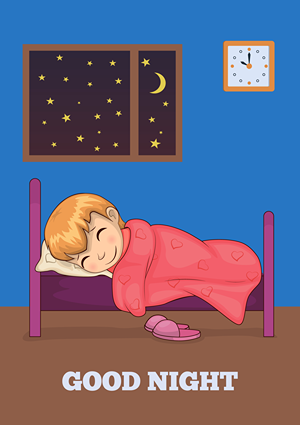Essential Safety Features to Look for in a Cabin Bed for Young Children
Cabin beds offer a popular space-saving solution for children’s bedrooms, combining sleep and storage in one compact unit. When selecting a cabin bed for young children, prioritizing safety features is crucial to ensure a secure sleeping environment. These elevated beds require careful consideration of design elements that protect against falls and accidents.
Parents should look for sturdy construction, robust guardrails, and secure ladder attachments when evaluating cabin bed options. The ideal cabin bed incorporates rounded edges, non-toxic finishes, and meets or exceeds safety standards set by regulatory bodies. By focusing on these essential safety aspects, families can create a comfortable and protected sleep space for their little ones. To discover cabin bed collection options that prioritize safety and functionality, explore reputable retailers specializing in children’s furniture.
Key Takeaways
- Sturdy construction and guardrails are essential safety features for cabin beds
- Rounded edges and non-toxic finishes enhance safety for young children
- Secure ladder attachments prevent accidents when climbing in and out of bed
Key Safety Features of Cabin Beds
Cabin beds offer unique safety considerations due to their elevated design and multi-functional features. Several crucial elements work together to create a secure sleeping environment for children.
Structural Integrity and Materials
Quality cabin beds are built with sturdy materials like solid wood or durable metal frames. These materials ensure the bed can withstand daily use and support a child’s weight safely. Manufacturers often use rounded edges and smooth finishes to prevent injuries from sharp corners.
Bed dimensions play a critical role in safety. The mattress should fit snugly within the frame, leaving no gaps where a child could become trapped. Most cabin beds are designed for standard mattress sizes, typically twin or full.
Weight capacity is another important factor. Parents should check the manufacturer’s specifications to ensure the bed can support their child’s weight, plus any additional items stored in built-in storage areas.
Secure Railings and Guard Edges
Safety railings are essential features of cabin beds, especially for younger children. These railings should be at least 5 inches above the mattress surface to prevent accidental falls during sleep.
Guard edges extend along the sides of the elevated bed platform. They create a barrier that keeps children from rolling off the edge while sleeping or playing.
Some cabin beds feature removable railings, allowing the bed to adapt as the child grows older. This flexibility ensures long-term use and value.
Appropriate Stairs and Ladder Design
Access to the elevated sleeping area is a crucial safety consideration. Stairs or ladders should have:
- Non-slip treads or rungs
- Handrails for added stability
- Proper angle (not too steep)
- Secure attachment to the bed frame
Wide, stable steps are preferable for younger children, while older kids may be comfortable with ladder-style access. Some designs incorporate storage drawers within the steps, adding functionality without compromising safety.
The spacing between ladder rungs should be narrow enough to prevent a child from slipping through. Generally, gaps should not exceed 3.5 inches.
Functional Design Elements
Cabin beds for young children combine safety, comfort, and practicality through thoughtful design features. These elements maximize space utilization while providing adaptable solutions that grow with the child.
Optimal Utilization of Space
Cabin beds excel at making the most of limited bedroom space. Raised sleeping platforms create usable areas underneath for play, study, or storage. Some designs incorporate desks or workstations, transforming the bed into a multi-functional piece of furniture. Built-in shelving along the sides or headboard offers convenient spots for books, toys, and decor.
Compact ladder designs provide safe access without protruding into the room. Sliding doors on lower cabinets save space compared to traditional swing-out options. Corner units make use of often-wasted room angles, fitting snugly into awkward spaces.
Incorporated Storage Features
Storage solutions are integral to cabin bed designs. Under-bed drawers offer ample space for clothing, bedding, or toys. Some models feature pull-out trundle beds for sleepovers, which double as extra storage when not in use.
Open shelving units can be customized with baskets or boxes for organized storage. Integrated wardrobes eliminate the need for separate dressers. Headboards often include hidden compartments or display shelves.
Built-in toy boxes or storage benches provide seating and containment for playthings. Some designs offer modular components, allowing parents to add or remove storage elements as needed.
Adapting to Child’s Growth
Well-designed cabin beds accommodate children’s changing needs. Adjustable desk heights ensure proper ergonomics as the child grows. Removable safety rails allow the bed to transition from toddler to teen years.
Neutral color schemes and classic designs have lasting appeal. Modular components can be reconfigured or replaced to suit evolving preferences. Some models offer convertible features, such as fold-down desks that become vanities.
Sturdy construction using quality materials ensures the bed withstands years of use. Easily accessible electrical outlets support the addition of study lamps or electronic devices as the child ages.
Conclusion
Cabin beds offer exciting sleeping options for children when proper safety measures are in place. Key features like sturdy guardrails, secure ladders, and rounded edges help prevent accidents. Choosing age-appropriate designs and durable, non-toxic materials further enhances safety.
Parents should carefully assess their child’s readiness, typically around ages 4-6, before transitioning to a cabin bed. With the right precautions and features, cabin beds can provide both a fun and secure sleeping environment for young children.




